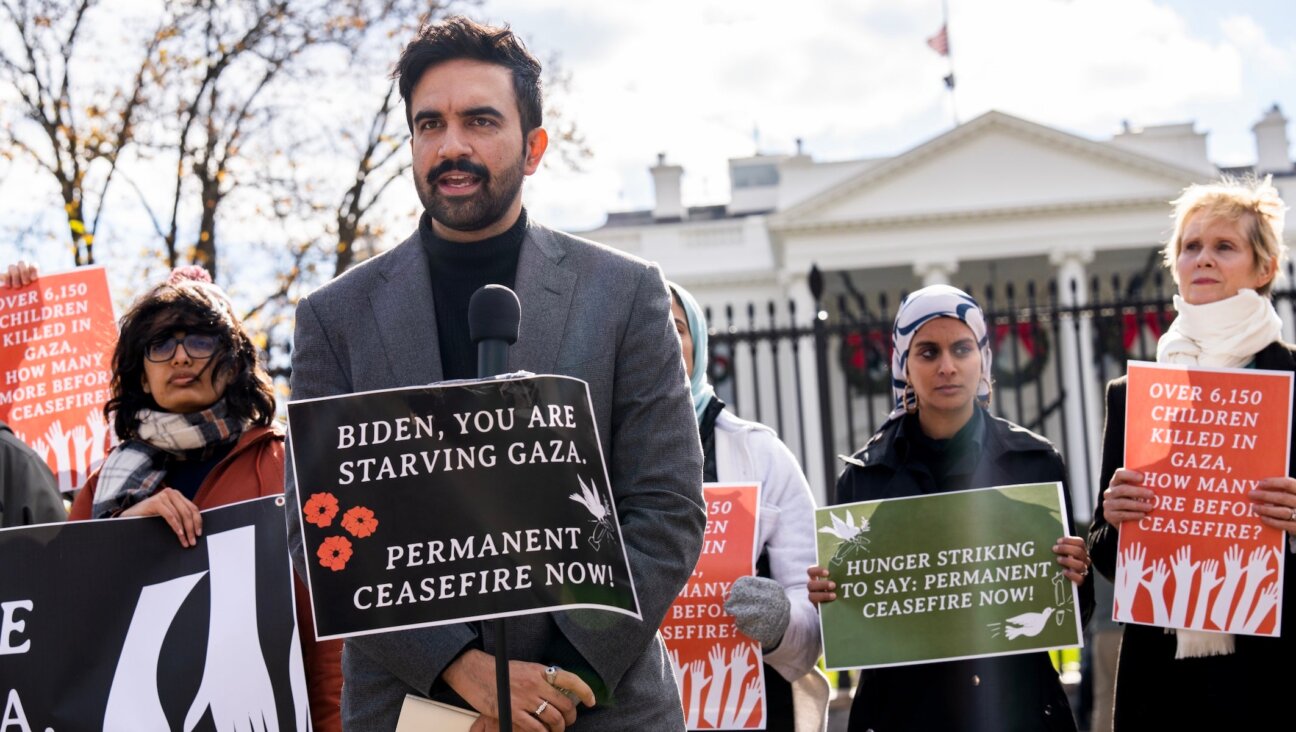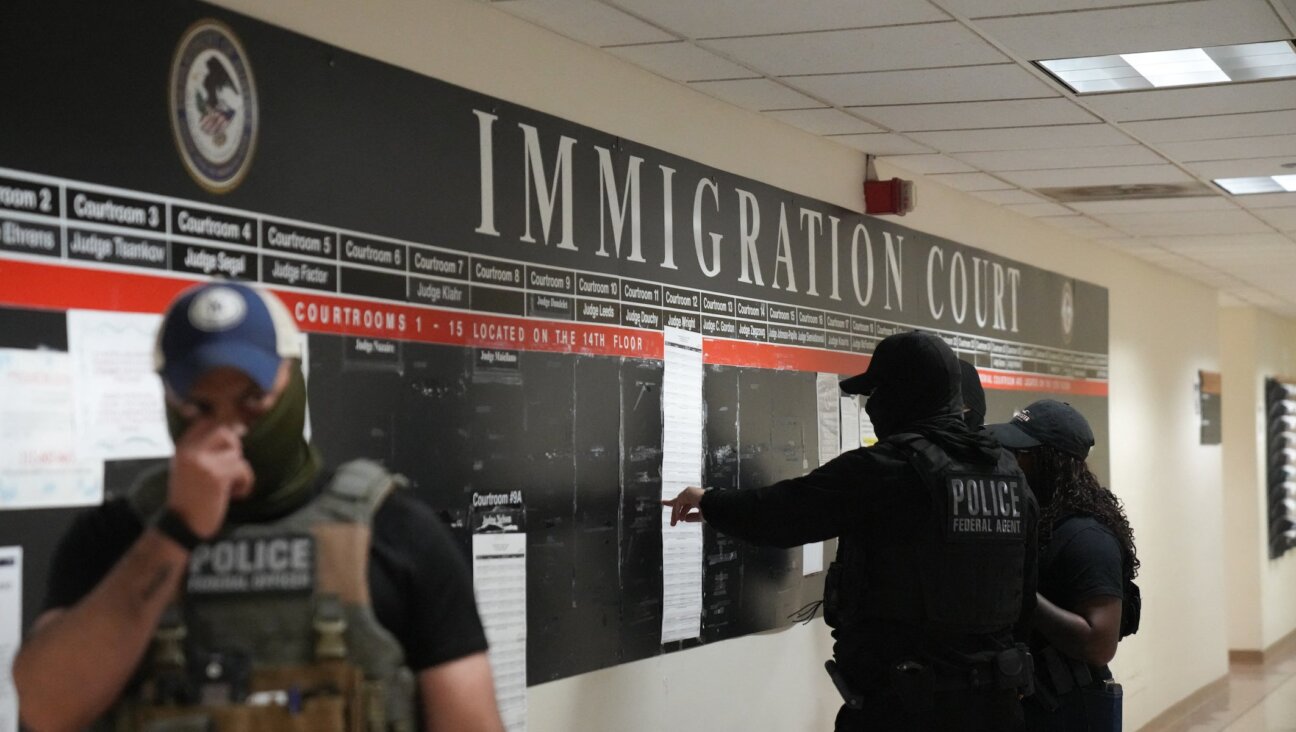For more than a century, a Jewish artist from Auschwitz reveled in nature and visual delight

Tova Berlinski By Wikimedia Commons
Tova Berlinski, who died Jan. 16 at age 106, proved that where Jewish artists are born is less important than what they create from those origins.
Berlinski’s hometown was Oświęcim, which then belonged to the Habsburg Kingdom of Galicia and Lodomeria, and is now part of Poland. She later described the town to interviewers as a Paradise Lost of powerful visual imagery.
She recalled watching women do their laundry in the Soła river, and admired young athletes from the Kadima Jewish Sports Association as they exercised and ran on nearby playing fields. In 1938, as a newlywed, Berlinski made Aliyah to British Mandate Palestine, not long before Germany invaded Poland and gave her hometown the German name of Auschwitz.
Berlinski always felt that this universally adopted appellation for her place of origin victimized it in a way parallel to what would soon happen to its Jewish inhabitants. To describe Berlinski as having been “born in Auschwitz” as some newspaper headlines have done, is a misleading anachronism and fails to capture her own mixed emotions about her early years.
The notorious extermination camp outside of town, where most of her family would be murdered, was not built until 1940, after she was gone. Subsequent events did not destroy her fond prewar memories of the town itself. Some of her paintings express mourning for her loss, but her art is largely celebratory and colorful, with large sculptural shapes reflecting a lifelong immersion in nature and visual delights.
At first aspiring to be an actress, Berlinski assumed a stage name. She was born Gusta Wolf, and after marrying Elijah Berlinski, her newly-adopted Hebrew first name of Tova was not considered sufficiently glamorous or showbizzy. So for her acting career, she became Tova Atzmoni.
In Tel Aviv, Berlinski studied with the formidable director Miriam Bernstein-Cohen, who nursed a grudge against the fabled Habima Theatre, the national theatre of Israel. Instead of trying to work on that stage, Berlinski landed roles in productions at Tel Aviv’s Cameri Theater of Carlo Goldoni’s “The Servant of Two Masters” (1945) and Federico García Lorca’s “Blood Wedding” (1946).
However, vocal difficulties abruptly ended her performing career and she took up painting instead. The early dramaturgical training would be reflected in her figurative art, where bodies, including later self-portraits, would have powerful stage presence.
During the 1950s, she took night classes at the Bezalel Academy of Arts and Design in Jerusalem, an distinguished institution where fellow alumni from different generations included Yaacov Agam, Ron Arad and Avigdor Arikha. Her mentor at Bezalel was Shlomo Vitkin, a sabra who had served in the British army during World War II, followed by further fighting during the Israeli War of Independence.
Like most prominent Israeli artists of his generation, Vitkin looked to hone his skills in Europe, and Berlinski followed suit by studying in Paris in the late 1950s and early 1960s with two French painters noted for their Resistance work, rescuing Jewish refugees during the Nazi Occupation.
André Lhote, a Cubist whose canvases had been promoted by the Jewish art dealer Léonce Rosenberg decades before, sheltered Jews at his spacious house in la Drôme, a department in southeast France. Among those saved were the Latvian Jewish artist Alexandre Garbell, André Lanskoy, of Russian Jewish origin, and Wilhelm Fédor Löwenstein, a German Jewish painter whose family was from Czechoslovakia.
From Lhote, Berlinski learned how to use vivid colors, as she did from Henri Goetz, a Surrealist painter and engraver who used his graphic skills during wartime to forge identity documents for Jews and others fleeing the Germans. Although in 2018 the Israel Museum sadly deaccessioned a work by Goetz, created just at the time of his Resistance work, many others remembered his heroic efforts.
In the postwar era, Jewish students like Berlinski flocked to receive his instruction, as did Pierrette Bloch, a painter and textile artist with Swiss Jewish roots who, like Berlinski, also benefited from the advice of André Lhote.
At the time, Abstract expressionism was trendy, and Berlinski imbibed a Europeanized version of the New York art movement as interpreted by Paris creators. Exposure to new and old European art traditions only piqued Berlinski’s intellectual curiosity, and no sooner had she returned to Israel than she began studying art history at The Hebrew University of Jerusalem under the guidance of Moshe Barasch.
Born in Czernowitz, Romania, Barasch is today considered one of the founders of art historical study in Israel, a disciple of the German Jewish iconographer Erwin Panofsky and expert on Renaissance frescoes, especially the work of Giotto. Also a trained artist, Barasch, like Goetz, had forged documents during the Second World War for Jews fleeing persecution.
Much influenced by the Italian Jewish historian Arnaldo Momigliano, Barasch provided much-needed perspective for Berlinski in her ongoing creative investigations.
Her paintings from the 1960s looked back at landscapes from her childhood in Oświęcim. In the 1970s, accepting the notion of artistic collectivity and mutual aspirations, she joined the Aklim (Climate) Group established after the Yom Kippur War by Rachel Shavit Bentwich and Eliyahu Gat, the latter a highly imaginative colorist from a Lithuanian Jewish family.
Also joining the Aklim Group around the time that Berlinski did was Ori Reisman, another Paris-trained devotee of luminous landscapes. Around the time of the 1982 Lebanon War, called Operation Peace for Galilee by the Israeli government, Berlinski began to refocus on drawing the human figure. The voluminous shapes she drew to capture people reflected something of the precedent of Giotto, Masaccio, and other Italian Renaissance masters whom she had studied with Moshe Barasch.
Also in 1982, she joined the Radius Group of artists, alongside David Gerstein, the sculptor, draftsman, and printmaker, and the modernist Eran Wolkowski. Around this time as well, she resolved to revisit Oświęcim, much to the dismay of many of her Israeli friends and colleagues. As Berlinski explained to the historian Agnes Grunwald-Spier, she tried to resolve the clash between her idyllic early memories and what had occurred later.
Recalling flowers as an omnipresent feature in her mind’s eye, she understood after repeated visits that the lack of any family memorials in Poland, where Jews were effaced from the landscape, meant she had nowhere to leave commemorative bouquets. Instead, she painted floral canvases, telling Grunwald-Spier, “The colors express my pain; my rage.”
Teaching was another consolation and emotional outlet for the upheavals of a long life, just as painting was. Among her many students over the years, a number achieved noteworthy artistic careers, like Mendel Kohansky and Rina Peled. From her eyrie in the Moshava neighborhood, known as the German Colony of Jerusalem, where she lived for over a half-century, Berlinski continued her painterly investigations well past her centenary.
Tova Berlinski’s abundant visual legacy recreates enduring sense memories that could not be effaced, even by the nightmares inflicted on 20th century European Jews.
























